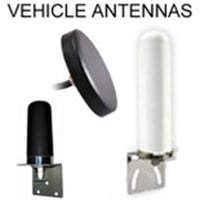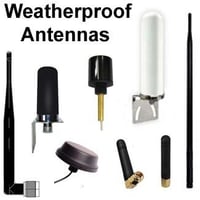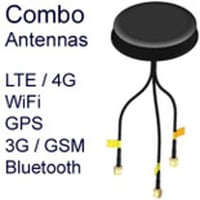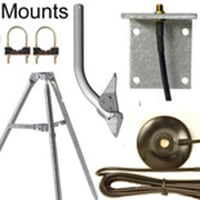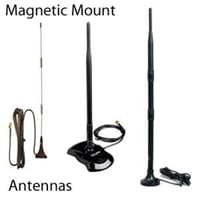Fiber Products
Ubiquiti UFiber Products:
What is fiber optic networking?
Fiber networking is a communications technology that uses high-frequency pulsations of infrared light to transmit data over optical fiber.
Optical fiber is a high-clarity fully transparent fiber made from strands of glass or certain plastics that have been drawn out to be as thin as human hair. Like radio frequency signal transmission down a copper wire, fiber networking uses light as its carrier wave, using a range of modulation techniques to encode and transmit data. Unlike radio frequency connectivity, fiber-optic networking is immune to electromagnetic interference. Fiber has demonstrable efficacy for supporting secure,high-speed, high-bandwidth connectivity over significant distances with minimal signal loss.
Fiber is capable of transferring a variety of data including voice, video, audio, and IP data packets. Current applications of this technology include telecommunications, broadband internet connectivity, and cable television
The history of fiber networks.
The development of fiber optic technology spans over 50 years and can be traced back to the invention of the laser. Before that Alexander Graham Bell created a device, named the photophone that could transmit sound on a beam of light. The use of optical fiber for communications was first proposed in the mid-1960s with the suggestion that the photons of light could be guided and directed in a similar way to electrons in a copper cable.
Early fiber optic technology was affected by high levels of losses from the prototype optical fibers and progress was only made in the 1970s where methods were found to drastically reduce losses, making fiber optics viable for its first, experimental network deployments from 1975.
Progress in fiber optic networking proceeded on a step-wise basis to its present levels of efficacy and performance. The bit rate (B) and repeater spacing (L) for these networks increased greatly, leveling off to where it is today.
-
First-generation fiber-optic networks used multimode fiber and operated at 850 nm using a Gallium Arsenide (GaAs) semiconductor laser. These networking components were commercially released in the early 1980s and supported speeds of up to 45 Mbit/s with repeater spacing of up to 10 kilometers (6.21 miles), far greater than comparable coax systems at that time.
-
Second-generation fiber-optic networks or lightwave systems were capable of achieving bit rates of up to 1.7 Gbit/s with an uplift to repeater length of 50 kilometers (31 miles). Both first and second generations systems were specified by the International Telecommunications Union (ITU), with the second-gen network operating at 300nm in single mode.
-
Third-generation fiber-optic networks were limited by significant losses due to increasing repeater spacing at 300 nm. But by 1992, single-mode systems were commercially available that operated at 2.5 Gbit/s reliably and up to 10 Gbit/s in experimental settings. Third-gen optical systems were able to operate at 550 nm. Repeaters to forward the transmitted signals needed to be installed every 70 to 80 kilometers. Further developments in the technology introduced fiber amplifiers (in 1989) that can boost repeater spacing. Also, Wavelength Division Multiplexing (WDM) was capable of boosting the bit rate that could be achieved. These enhancements converged with the emergency of fourth-generation lightwave systems.
-
Fourth-generation fiber-optic networks use amplifiers and multiplexing to boost speeds above 5 Gbit/s and repeater distances in the hundreds of kilometers.
-
Fifth-generation or fifth-phase fiber-optic networks include the contemporary forms of fiber networking which have developed in a variety of directions including long-haul, high-capacity, multimode, optical/electrical/optical (O/E/O), and multi-channel networking. Also, extremely low-loss fibers have been developed such as the dry or low water peak fiber. Contemporary lightwave systems have tens of channels with end-user networking speeds of tens of Gigabits per second. Network topography has also matured with the development of optical transport networks (OTNs). The ITU has released successive standards for OTNs that have supported a transition in fiber technology from short distance links to long-distance backbone links over optical paths of 2000 kilometers.
Key fiber network components
[A] Optical transmitters: Optical transmitters receive an electrical input and convert it into an optical signal that is transmitted down the fiber cable. These transmitters are LED or laser diode semiconductor devices that are capable of operating at the required wavelength with high-frequency modulation. Ideally, the transmitters are small and compact and integrate both the electrical and optical connectors.
-
Laser diodes that produce coherent light (light with a fixed phase wave) are highly efficient, with little loss. They produce a directional output with effective coupling to the attached fiber cable. Vertical Cavity Surface Emitting Laser (VCSEL) devices have enhanced speed, power, and spectral performance compared to LED devices. Modulation is achieved by the current that is directly applied to the transmitter.
-
Gallium Arsenide LED optical transmitters are cheaper and produce incoherent light, which has a wider and more variable spectral width. They are less efficient than their laser counterparts with only a small proportion of the input power converted into launched power via the fiber cable.
[B] Optical receivers are devices that are able to receive an optical signal via a fiber connection and convert it into an electrical output signal. These devices used the photoelectric effect, where electron emissions are generated by transmitted light hitting diode material within the receiver.
The optical-electrical converter portion of the receiver is coupled to transimpedance and limiting amplifiers that assist in producing a viable digital output signal as it can become attenuated by the conversion process. Other signal processing steps may also be applied to the signal recovered by these devices depending on where the transmitted light was coherent or incoherent.
[C] Optical fiber cable is comprised of flexible thin, glass, or plastic fibers that are bundled and clad to guide light that is transmitted down them. The cables use total internal reflection fast, directional transmission. A typical fiber cable is comprised of a core of fibers, that are clad in low refractive material and sealed in a protective outer jacket known as a buffer.
Despite being made up of hair-like glass fibers these cables are resilient and can be routed, buried, or submerged similarly to copper cable. Once installed their maintenance requirements are low.
There are two key classes of optical fiber used in networking.
-
Multi-mode optical fiber cable has a core that has a larger diameter (50 micrometers) meaning that it can operate effectively with LED optical transmitters that use incoherent light and have poorer precision. Because of the equipment used with it, multi-mode fiber can be affected by distortion and attenuation, which limits the bandwidth of links formed with this cable.
-
Single-mode optical fiber has a diameter of fewer than 10 micrometers but requires precision network components for more accurate data transmission and more robust, longer-distance links.
Like coax, both types of fiber are available in a range of grades depending on the wavelength of light they use and their attenuation. The quality of the fiber (particularly the presence of water and other impurities) and its bend radius are key determinants of the performance of the cable and its level of attenuation.
[D] Amplifiers: As mentioned in the history of Fiber networking above, distortion and attention of transmitted signals were originally key limiters of the utility of fiber. An initial solution for this problem was the use of optoelectronic repeaters that would receive and retransmit the optical signal at regular intervals. These devices would have to be installed at regular intervals (every 20 kilometers / 12 miles) along a cable run which proved expensive.
Repeaters have been largely superseded by amplifiers that do not need to convert the signal to an electrical one before enhancing it and sending it on. Optical amplifiers do not need to convert the signal to an electrical and back again making them simpler, reliable, and more efficient. They can operate on a wideband basis processing multiple channels at a time.
How does fiber optic networking work?
Modern fiber links are capable of simultaneously transmitting data across multiple channels via a single fiber. This is achieved by using Wavelength-division multiplexing. This technique is analogous to Frequency division multiplexing used in radio carriers but uses light wavelength (measured in nanometers) rather than frequency. Multiple beams of light with varying wavelengths are sent through the fiber, each encoding data on a distinct channel. The network includes a multiplexer within the transmitting equipment and a demultiplexer in the receiving equipment. By using this technique the capacity of fiber networks is multiplied massively.
The wavelengths of light used in fiber networking
Light wavelengths are critical to fiber networks as they determine the maximum distance that data can be transmitted with the least attenuation. Commercial fiber networks will use one of three standard wavelengths for transmission:
- 850 nm
- 1300 /1310 nm
- 1550 nm
These three wavelengths are all in the infra-red portion of the light spectrum. Fiber-optic networking, never uses visible light, always infra-red light because of its desirable behavior in nonlinear media that supports the very fast switching required in networking.
The three key frequencies have been settled upon because they are the infra-red wavelengths that have the lowest levels of attenuation when transmitted through the fiber. They also are less likely to be absorbed or scattered by water, trace metals, and other impurities within the fiber.
- The 850 and 1300 nm wavelengths are used for multi-mode and LED fiber applications.
- The 1310 and 1550 nm wavelengths are used for single-mode and laser fiber applications.
MikroTik, Ubiquiti SFP modules for fiber networking
What are SFP modules?
Small Form-factor pluggable (SFP) modules or mini GBICs (gigabit interface converters) are fiber-optic transceivers that are hot-pluggable. They are able to realize bi-directional optical-electrical signal conversion.
These transceivers are non-standardized but produced by a multi-source agreement (MSA), which provides high intercompatibility between manufacturers. This makes them easy to include in network devices such as switches, media converters, network interface cards, and use for extending link distance. They are available in single or multi-mode format.
There are two types of module which must be distinguished for correct use as they have different data rates and transmission distances. SFP is used for 100BASE and 1000BASE networking whereas SFP+ modules are for Gigabit networking applications. Using SFP modules in SFP+ hardware will downgrade its speed and performance and SFP+ modules and SFP hardware are incompatible.
The SFP modules can be used for short and long-distance data transmission in 1G networks. They can be used in accordance with several IEEE standards including those for Ethernet and inc some cases Power over Ethernet.
-
1000 BASE-SX SFPs are used for short-distance data transmission. They operate on the 850 nm wavelength and are designed to operate with multimode fiber cable links of up to 550 meters (1804 feet) in length.
-
1000 BASE-LX SFPs are used for long-range data transmission. They use single-mode fiber cable operating on the 1310 nm wavelength.
Ubiquiti Ufiber plug and play fiber networking
Our range of high-quality fiber modules and cabling is designed to support a variety of applications. It is suitable not only for new installations but also for the upgrade of an existing fiber network.
The Ubiquiti UFiber products are designed for the distribution of consumer high-speed, long-distance connections across fiber cables. It can be used for outdoor fiber installations with cable runs of over 300 meters. If there is existing fiber infrastructure in place their proprietary SFP modules can be integrated.
Ubiquiti also offers fiber cable assembly solutions and single-mode/ multi-mode fiber modules for network upgrades and installations under the UFiber line of products.
Other UFiber products include:
-
UFiber Nano G: Nano G is a high-performance GPON optical network unit for consumer use. The unit has one GPON WAN port and a Gigabit Ethernet port with a throughput of up to 2.488 Gbps Downstream, and 1.244 Gbps Upstream. It is powered by a passive 25V PoE. The Nano G features a sleek design and a plug-and-play capability. An LED status display shows real-time information about the network such as speed, signal strength, and throughput. It is designed for indoor use and accommodates wall mounting.
-
UFiber Loco: Loco means low cost. The UFiber Loco is a low-cost, low-power version of the Nano G but with the same performance and functional features. The LED display is replaced by indicator LEDs to show device status. The Loco unit can draw power from either the 24V passive PoE or from a USB power port.
-
UFiber OLT: This is a robust high-performance 8-port GPON Optical Line Terminal. The OLT features two 10Gbps SFT+ ports, an RJ45 serial port, and flexible Layer 2 and Layer 3 switching. Amounting to a maximum throughput of 2.488 Gbps RX and 1.244 Gbps TX. UFiber OLT can support a host of 128 ONUs at each port, totaling 1024 units per OLT device from a distance of up to 20KM.
These Ubiquiti UFiber products can be controlled and managed by Ubiquiti’s Network Management Software (UNMS).
Indoor/Outdoor data, fiber, and power composite cables
Composite cables are a niche solution for network applications that require both remote power and robust network connectivity. They are Power over Ethernet compatible also, making them useful for video applications. Composite cable combines:
-
Fiber optic cable - available in single mode or multimode depending on the specification of the cable. The single-mode cable is 4C Singlemode Tight Buffered Optical Fiber.
-
Ethernet cable - typically Cat 5e or Cat 6 shielded Ethernet cable
-
12 AWG paired stranded copper conducting wires in PVC jacket for power. Up to 100 Watt power delivery depending on wire gauge and length of cable used.
The cables are housed in weatherproof plastic jacketing and also include dry gel tape and dry gel filler to protect the cables from water ingress. An integrated ripcord provides access to the individual cables. This cable is suitable for both indoor and outdoor installation including light burial, making it ideal for future-forward hybrid network installations.
REACH and RoHS compliant fiber-optic networking equipment
Our entire inventory of fiber optic cable, modules, and other components comply with the Restriction of Hazardous Substances (RoHS) Directive and the more stringent REACH requirements that limit the use of hazardous substances like lead or mercury in electrical and electronic equipment. The fiber optic networking equipment also complies with Federal and international conflict mineral legislation that prohibits the use of certain metals that have been procured from sources that are associated with conflict and forced labor.
Frequently asked questions for fiber networking
- What is a passive optical network?
Passive Optical Networks (PONs)provide broadband network connectivity to multiple end-users. Internet Service Providers (ISPs) increasingly use PONs as access networks for “last-mile” connectivity for their customers. PON has a star or point-to-multipoint topology with each optical fiber serving multiple end-users through the use of passive fiber optic splitters that divides the supplied bandwidth amongst the end-users. They take advantage of wavelength division multiplexing to enable the bi-directional trafficking of data at scale.
-
-
Optical line terminals are the central hubs of PON networks. At this service provider endpoint, electrical signaling is converted into optical signals. The duplexing performed is also coordinated from this point.
-
Optical network units/terminals are installed close to end-users. They are not access points, but the location in the network where the optical line is terminated and the signal separated into its various components including, voice, TV, and internet.
-
The IEEE has also standardized Ethernet PON (EPON or GEPON) as part of 802.3ah, released in 2004. This Ethernet standard deals with short-haul networking using a combination of Gigabit Ethernet and fiber optic networking with a single protocol layer. It is inexpensive and has had widespread uptake becoming is the most commonly deployed type of PON network.
- What is Fiber To The Office?
Fiber to the office, also known as FTTO, uses fiber optic networking to create a local area network (LAN) suitable for an office environment. It is hybrid, combining elements of passive fiber networking and Gigabit Ethernet via specifically designed FTTO switches. The backbone of the network is fiber and distributed from a hub to the office floor. The last 5 meters to the end-user access point is Ethernet.
Fiber To The Desk (FTT) takes fiber connectivity even further. It creates high bandwidth direct fiber connections between the LAN and end-user equipment like laptops or printers. It has proved to be competitively priced, efficacious, and secure especially as it cannot be affected by EMI. End-user equipment can be adapted to access the fiber network via fiber Network Interface Cards, USB to fiber Ethernet adapters, or media converters.
In conclusion
Fiber networking provides robust and reliable connectivity for both indoor and outdoor network installations. High-quality cable and networking components with high intercompatibity and interoperability are key to building fiber and hybrid network solutions that will prove resilient long-term.
LEARN MORE:

